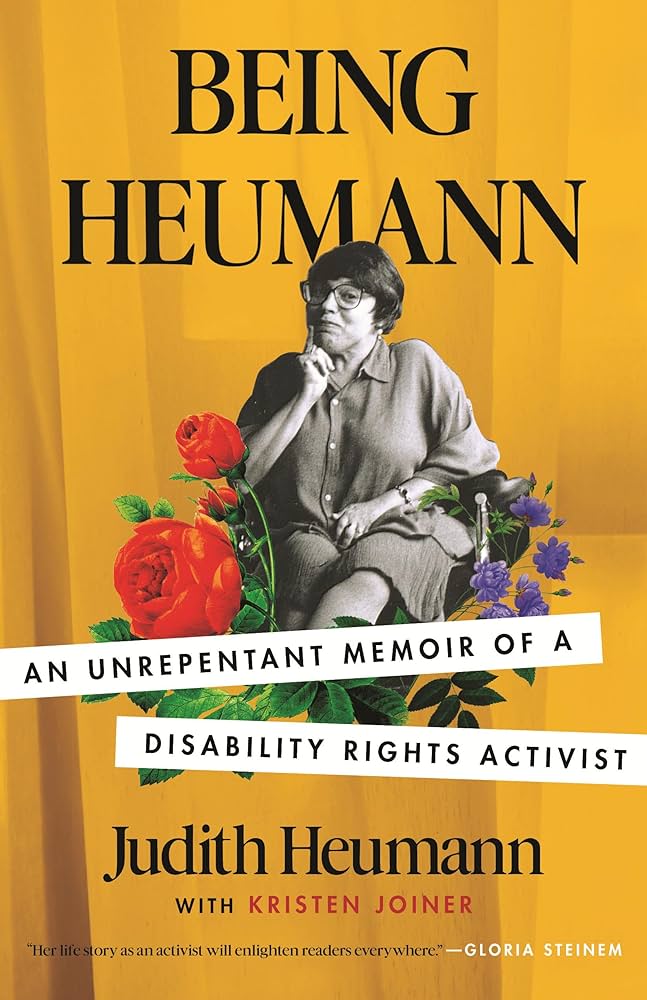Disability Pride Month
Disability Pride Month, held in July in recognition of the Americans with Disabilities Act (ADA), celebrates the achievements and honors the history and struggles of the disability community. Join Albertus as we honor the many among us with disabilities and support a call for Accessibility for All.
History
Disability Pride Month was established after George H. W. Bush signed the Americans with Disabilities Act on July 26, 1990. Boston first celebrated Disability Pride Day in 1990, and Chicago hosted the first Disability Pride Parade in 2004.
Prior to the Americans with Disabilities Act, citizens with disabilities faced discrimination in many facets of American life, much like the discrimination faced by people of different races, religions, sexes, and nationalities prior to the Civil Rights Act of 1964.
The ADA provides protection from discrimination, and also requires both employers and public entities (Including Colleges, Transportation, Living Facilities, etc.) to provide reasonable accommodations and provide access accommodations to persons with disabilities.
Disability Pride Month not only recognizes the ADA, but also asks us to consider how best to move towards a world that is accessible to all. Join Albertus as we celebrate Disability Pride Month this July.
The Disability Pride Flag

Originally created in 2019, the Disability Pride flag, which has gone through some changes, represents a vast history and people with each of its colors. According to its creator, Ann Magill, the colors represent:
- The faded black background represents "the anger and mourning over the eugenics and the neglect that disabled people have to fight against."
- Red represents physical disabilities.
- Gold is for neurodiversity.
- White represents invisible disabilities and disabilities that haven't yet been diagnosed.
- Blue stands for emotional and psychiatric disabilities, including mental illness, anxiety, and depression.
- Green is for sensory disabilities, including deafness, blindness, lack of smell, lack of taste, audio processing disorder, and all other sensory disabilities.
Why Pride and not Awareness
“While doing some research I found an interview with a disability rights activist. She was asked ‘why is it disability pride, not disability awareness?’ her response was ‘I often think of the term awareness as something that we use when we’re talking about something that we want to solve, a problem to be fixed. Disability is not a problem to be fixed, it’s a culture, it’s an identity. It’s something that so many of us celebrate.’” (Ashley Elrod; “Why Disability Pride Month vs Disability Awareness Month?;” https://speciallygifted.org/parent-tips/why-disability-pride-month-vs-disability-awareness-month/; accessed 6/12/24)
Ways to Support
During Disability Pride Month, and throughout the year, there are many ways to show your support for persons with disabilities.
- One big way to support and be a better ally is to educate yourself.
- Organizations like The Arc of the US (https://thearc.org/) exist to educate and promote accessibility initiatives, and have chapters throughout the country.
- Learn about universal design and consider ways in which we can promote accessibility for all.
- Learn about the history of Disability Rights and the ADA
- Take the opportunity to talk with a friend or relative with a disability, and consider their perspective
- Attend a Disability Pride parade! There are parades and festivals across the US, including the Disability Unite Festival in NYC (https://disabilityunite.org/) and a Virtual Disability Pride Parade on July 26th (https://www.easterseals.com/support-and-education/living-with-disability/virtual-disability-parade.html)
Additionally, in recognition of Disability Pride Month, Albertus will be opening the “Accessibility Concern Reporting” Form. This form, which will open on July 1st and remain open throughout the year, will provide students, staff, and faculty with a reporting tool to draw attention to accessibility concerns across campus. Only by educating ourselves can we hope to combat inaccessibility, and the responses to this form will be used to help shape initiatives across campus.
Book Club
This July, Albertus and the Office of Accessibility Services would like to highlight a sample of literature, both fiction and non-fiction, that highlights those with disabilities. If you have the time, read one (or more!) of the selection and let us know what you thought! (All summaries courtesy of Amazon.com)
The Curious Incident of the Dog in the Night-Time
by Mark Haddon
Christopher John Francis Boone knows all the countries of the world and their capitals
and every prime number up to 7,057. He relates well to animals but has no understanding
of human emotions. He cannot stand to be touched. And he detests the color yellow.
This improbable story of Christopher's quest to investigate the suspicious death of
a neighborhood dog makes for one of the most captivating, unusual, and widely heralded
novels in recent years.
So Lucky: A Novel
by Nicola Griffith
Mara Tagarelli is, professionally, the head of a multimillion-dollar AIDS foundation; personally, she is a committed martial artist. But her life has turned inside out like a sock. She can’t rely on family, her body is letting her down, and friends and colleagues are turning away―they treat her like a victim. She needs to break that narrative: build her own community, learn new strengths, and fight. But what do you do when you find out that the story you’ve been told, the story you’ve told yourself, is not true? How can you fight if you can’t trust your body? Who can you rely on if those around you don’t have your best interests at heart, and the systems designed to help do more harm than good? Mara makes a decision and acts, but her actions unleash monsters aimed squarely at the heart of her new community.
Being Heumann: An Unrepentant Memoir of a Disability Rights Activist
by Judith Heumann
A story of fighting to belong in a world that wasn’t built for all of us and of one woman’s activism—from the streets of Brooklyn and San Francisco to inside the halls of Washington—Being Heumann recounts Judy Heumann’s lifelong battle to achieve respect, acceptance, and inclusion in society.
As a young woman, Judy rolled her wheelchair through the doors of the US Department of Health, Education, and Welfare in San Francisco as a leader of the Section 504 Sit-In, the longest takeover of a governmental building in US history. Working with a community of over 150 disabled activists and allies, Judy successfully pressured the Carter administration to implement protections for disabled peoples’ rights, sparking a national movement and leading to the creation of the Americans with Disabilities Act.
Candid, intimate, and irreverent, Judy Heumann’s memoir about resistance to exclusion invites readers to imagine and make real a world in which we all belong.
